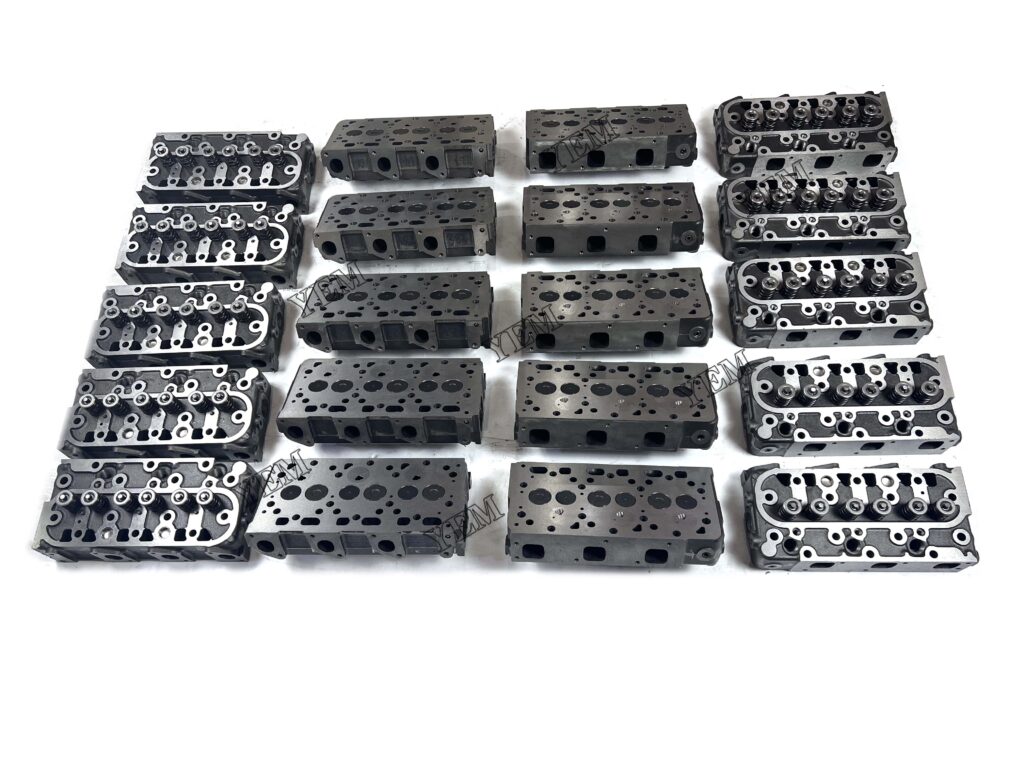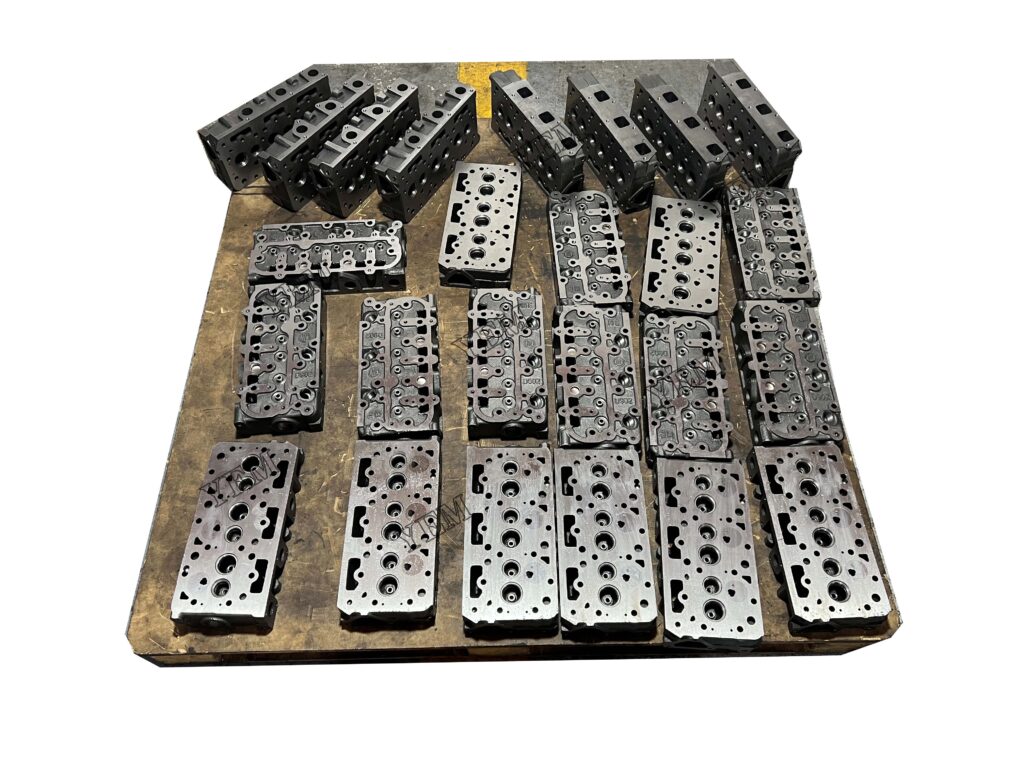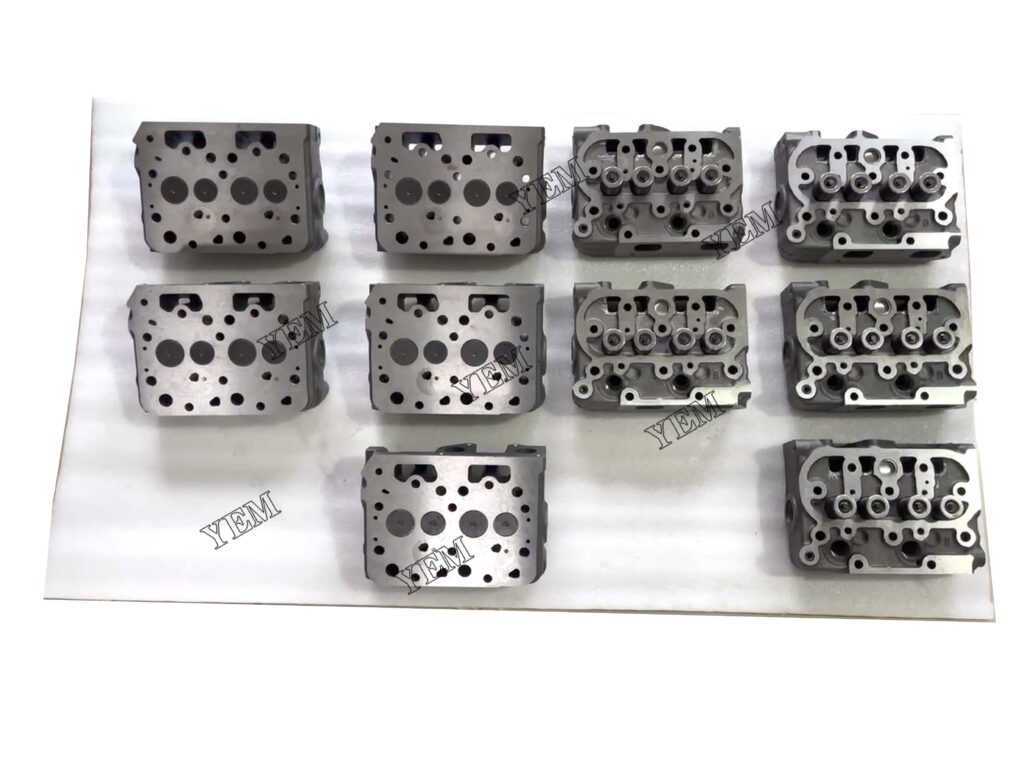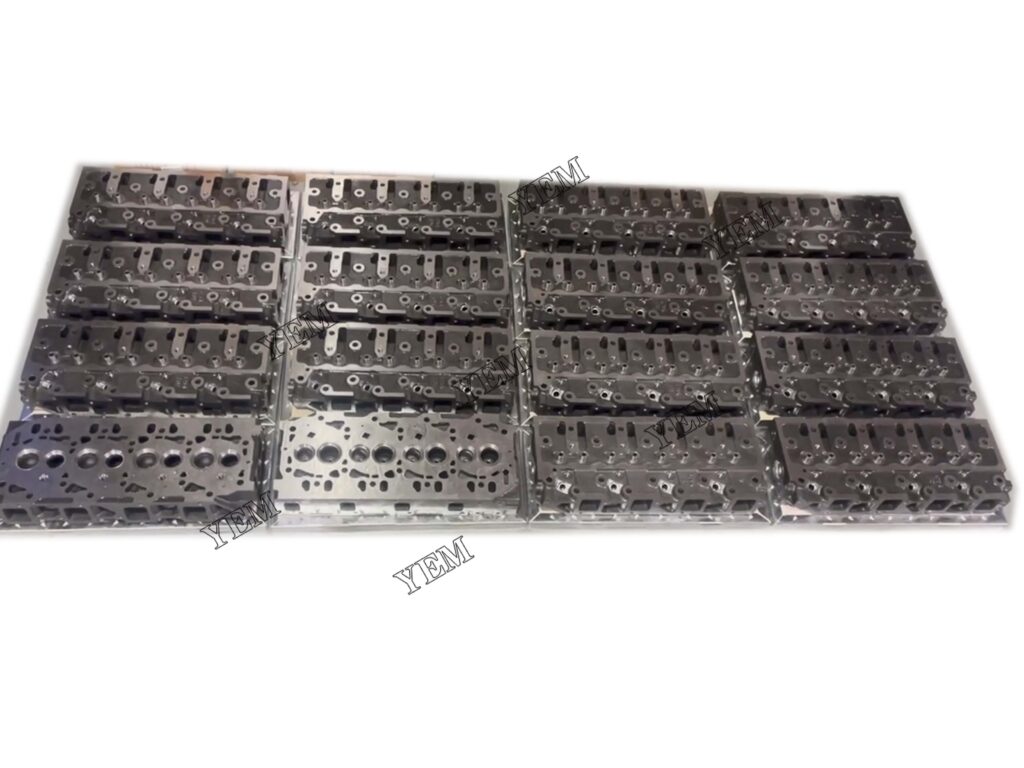The engine cylinder head is a cover installed above the engine block, which has the following functions and functions:
- Closed Cylinder: The engine head closes the top of the cylinder, creating a sealed combustion chamber. This prevents the leakage of high temperature and high pressure gas generated during the combustion process, and ensures that the pressure inside the combustion can be maintained normally.
- Install valves and camshafts: There are usually installation holes for valves and wheel shafts on the engine cylinder head. The valve is connected to the cylinder through the cylinder head and controls the intake and exhaust process. The camshaft is fixed by the camshaft seat on the cylinder head to drive the opening movement of the valve.
- Cooling and heat dissipation: There are usually cooling water passages and heat sinks on the engine cylinder head, which are used to cool the engine.
- Diversion and distribution oil circuit: Diversion grooves and distribution oil holes are also set on the engine cylinder head to guide the flow and distribution of lubricating oil. Lubricating oil passes through the channels and holes in the cylinder head to lubricate the door mechanism, camshaft and other components, reducing friction and wear.
- Reduce noise and vibration: The engine cylinder head can play the role of insulation and vibration reduction, reducing the degree of noise and vibration generated when the engine is running and transmitting to the vehicle chassis, and improving driving comfort.

In summary, the engine cylinder head plays a key role in the engine, and Bohol supports many important engine components and ensures the normal operation of the engine.
Engine head materials and manufacturing processes can vary for different engine types and applications. The following are some common engine head materials and manufacturing processes:
- Materials:
- Cast iron: a material commonly used in traditional engines, with good strength and wear resistance.
- Aluminum alloy: a material widely used in modern engines, with low weight and good electrical conductivity.
- Magnesium Alloy: Used in some high-performance engines for lighter weight and higher strength.
- Manufacturing process:
- Casting: One of the common manufacturing methods by pouring molten metal into a mold and then cooling to solidify into shape.
- Machining: For some engine cylinder heads that require high precision, machining processes such as milling and drilling will be used.
- Forging For some high performance engines, a forging process may be used to increase the strength and durability of the material.
- Welding: In some complex engine designs, multiple parts may need to be assembled by welding.
Note that different engine makes and models may use different materials and manufacturing processes to meet specific performance and reliability requirements. Therefore, there may be further differences and details in the body’s engine specifications and applications.
Engine heads are designed and optimized to achieve the following goals:
- Strength and rigidity: The engine cylinder head needs sufficient strength and rigidity to withstand high pressure and temperature, and to prevent deformation and leakage. The strength and rigidity of engine cylinder heads can be increased through the use of proper materials and structural design.
- Heat dissipation performance: The engine cylinder head needs to dissipate heat effectively to keep the engine operating temperature within a reasonable range. Coolant flow and fin placement should be considered in the design to maximize heat dissipation.
- Sealing performance: The engine cylinder head needs to have good sealing performance to prevent the leakage of gas and liquid. The optimization of sealing performance can be realized by adopting suitable sealing material, design of sealing surface and processing technology.
- Weight reduction and energy saving: The weight reduction of the engine cylinder head can reduce the overall engine mass, thereby improving fuel economy and vehicle performance. The weight reduction and energy saving of the engine cylinder head can be achieved through the optimization of structural design, the use of lightweight materials and manufacturing processes and other methods.
- Production feasibility and cost-effectiveness: The design of the engine cylinder head also needs to consider the feasibility and cost-effectiveness of the production process. Proper design can reduce manufacturing costs and ensure reliability and consistency in mass production.

In order to achieve the above goals, the design and optimization of the engine cylinder head usually requires analysis and simulation with the help of tools such as computer-aided design (CAD) and computational fluid dynamics (CFD). In addition, for high-performance engines, advanced materials and manufacturing technologies such as additive manufacturing (3D printing), composite materials, etc. may be used to further improve the performance and efficiency of the engine cylinder head.
The engine cylinder head is an important part of the engine, it sits above the engine, covers and seals the cylinders. If the engine cylinder head fails, it may cause the following problems:
- Coolant leakage in water-cooled engines: There are coolant channels and gaskets on the engine cylinder head. If the gaskets are broken or damaged, the coolant may leak to the outside of the engine.
- Lubricating oil leakage: There are also lubricating oil passages and gaskets on the engine cylinder. If the gasket is broken or damaged, the lubricating oil may leak to the outside of the engine.
- Abnormal cylinder pressure: The valve and valve seat on the engine cylinder seal the cylinder. If the seal is not good, the cylinder pressure may drop, resulting in a decline in engine performance.

When an engine cylinder head fails, it generally needs to be repaired or replaced. Here are some possible repair methods:
- Gasket replacement: If the gasket of the engine cylinder head is cracked or damaged, the engine cylinder head needs to be removed, the surface should be cleaned and a new gasket should be replaced. Make sure to use a suitable gasket and install it according to the manufacturer’s instructions.
- Cylinder head repair: In some cases, engine cylinder heads may develop cracks or other damage. In this case, you can consider sending the cylinder head to a professional machine repair shop for repair. Repair methods may include welding, grinding and reworking.
- Replace the head: If the damage to the engine head cannot be repaired, or the repair cost is too high, it may be necessary to replace the entire engine head assembly. This is usually a more expensive repair option requiring a new cover to be purchased and installed.
Please note that the faults and repair methods of the engine cylinder may vary depending on the engine type of the specific model. It is recommended to consult a professional car technician or mechanic in case of problems to obtain accurate diagnosis and repair suggestions.
The future development trend of engine cylinder head mainly focuses on the following aspects:
- Lightweight design: With the continuous improvement of fuel economy and emission requirements, the lightweight design of the engine cylinder head has become an important development direction. The use of lightweight materials such as aluminum alloys, alloys, etc. can reduce engine weight, improve fuel efficiency, and reduce exhaust emissions.
- Optimization of heat dissipation performance: The engine cylinder will be affected by high temperature during engine operation, so the optimization of heat dissipation performance is a key development direction. By improving the design of the coolant channel and adding heat sinks or radiators, the heat dissipation effect of the engine cylinder head can be improved and the engine can be kept within a suitable operating temperature range.
- Integrated design: Future engine cylinder heads may adopt more integrated designs, integrating more functions into the cylinder head. For example, injectors, valve control systems, sensors, etc. are integrated into the cylinder head to reduce the number of parts, simplify the structure, and improve the reliability and reliability of the engine.
- Application of motorization technology: With the development of electrification technology, the engine cylinder head may adapt to the needs of hybrid and pure electric vehicles in the future. For example, an electric motor or electric booster could be integrated on the engine head for more efficient energy conversion and drive.
- Manufacturing process improvement With the continuous advancement of manufacturing technology, the manufacturing process of the engine cylinder head will also be improved. For example, the use of advanced casting, forging, processing and other processes can improve the accuracy, strength and durability of the cylinder head and reduce manufacturing costs.

In general, the future development trend of the engine cylinder head will focus on quantification, performance optimization, integrated design, electrification technology application and manufacturing process improvement. These trends aim to improve engine performance, fuel economy and environmental friendliness to meet increasingly stringent emission standards and market demands.
Thank you for reaching out to our YEM team. We are committed to delivering excellent service and support to our customers. If you have any questions or require assistance, please feel free to contact us.
We are available to help and eagerly await the opportunity to address any inquiries you may have.
